The entrances to villas and palaces have always represented a passage between wealth and royal lifestyle. They are architectural statements that declare wealth, power, and character. From the marble colonnades of ancient Rome to the glittering foyers of modern luxury homes, these entrances reflect the ambitions and values of their time.
A grand entrance creates the first experience for visitors. It is the initial encounter with elegance, often designed to inspire admiration and expectation. In this exploration, we journey across eras and continents to understand how villas and palaces have used gates, porticos, staircases, and courtyards to express prestige, hierarchy, and harmony.
1-The Origins: Roman and Renaissance Villas
The story of the villa begins in ancient Rome. Roman elites built country estates — retreats from the political noise of the city — where they could enjoy otium, a life of leisure and reflection. Writers like Pliny and Columella described these villas as sanctuaries uniting architecture and nature.
The typical Roman villa consisted of two main parts:
- The villa rustica, or working section, which managed agricultural activity.
- The villa urbana, or residential portion, where owners entertained guests and sought serenity.
The entrance, often framed by colonnades and porticos, connected house and garden, merging structure and landscape. Crossing that threshold symbolised entry into a cultivated, ordered world. The approach was deliberate — a processional moment designed to heighten awareness of balance and grandeur.
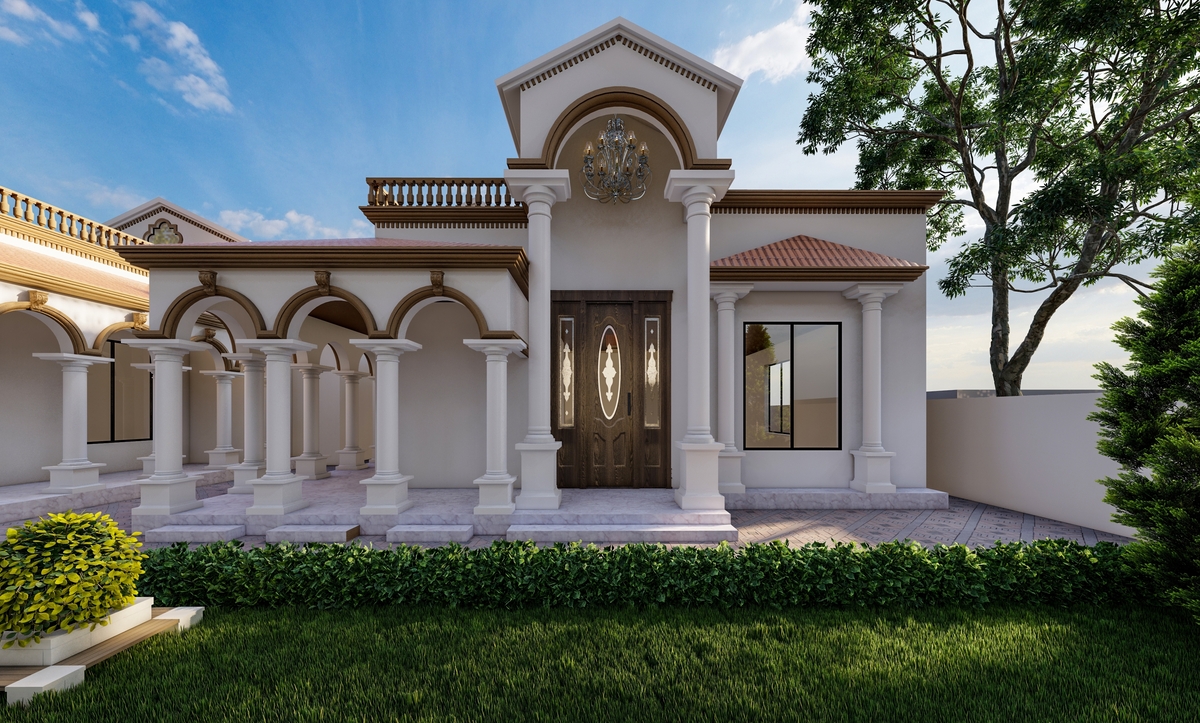
Centuries later, during the Renaissance, Italian architects revived these classical principles and adapted them for an era of humanism. Andrea Palladio’s Villa Rotonda in Vicenza epitomised this vision. Its four identical porticos created entrances on all sides, turning the villa into a perfect symmetrical object that engaged with the surrounding hills.
The Renaissance entrance became a stage of approach. Guests ascended steps toward temple-like façades framed by columns and crowned with pediments.
2- The Timeless Appeal of Classical Villa Entrances
What makes classical entrances endure through time? Their strength comes from balance, rhythm, and structure.
Grand columns — Doric for solidity, Ionic for elegance, and Corinthian for splendour — anchor façades with calm authority. Arched doorways and carved stone frames lend depth, while symmetry creates visual comfort.
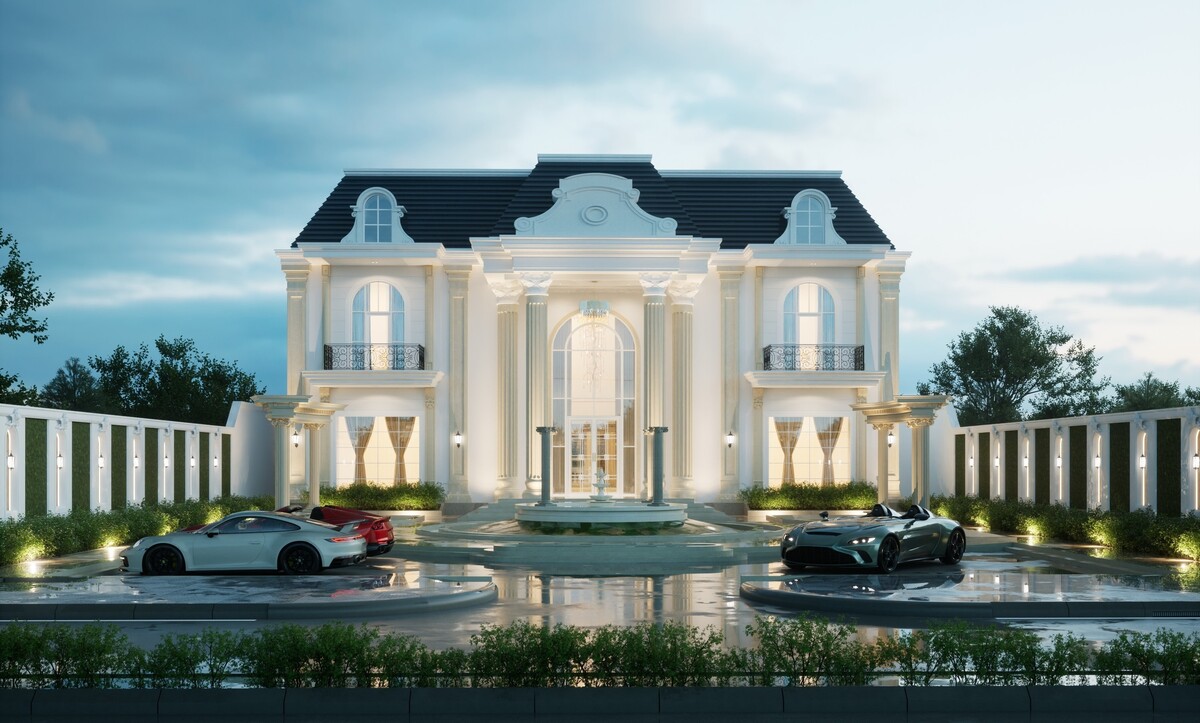
A 2025 design guide on European villas highlights how these features continue to influence modern architecture. Wrought-iron gates, ornate grilles, and refined lighting transform façades into welcoming compositions that express unity and style.
In Tuscany and Umbria, old villas still display centuries-old wooden doors, decorative ironwork, and limestone surrounds. According to Casa Tuscany, such features are not mere ornaments but symbols of permanence and quality. The front door, it notes, plays a key role in a property’s overall impression — “the point where history meets hospitality.”
3- Villas in the Modern Age
Today’s luxury villas draw inspiration from classical forms while embracing modern materials and function. Architects combine symmetry and openness, using glass, steel, and light to create fluid connections between interior and exterior.
At Algedra, designers emphasise that a villa’s entrance expresses the personality of the entire residence. Every element — from the flooring material to lighting fixtures — contributes to a sense of elegance and comfort.
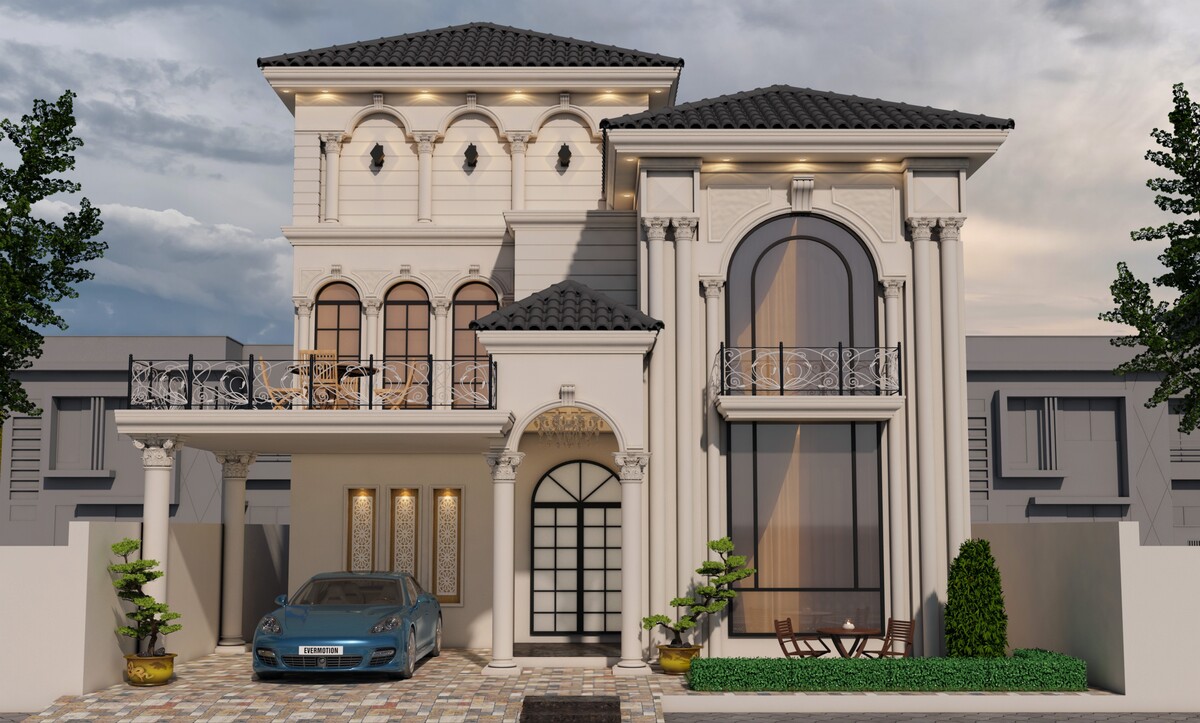
Polished marble floors, exotic woods, detailed metalwork, and custom lighting create entrances that feel both stately and inviting. Modern foyers often integrate practical elegance: built-in seating, concealed storage, and curated décor coexist with mouldings and carefully proportioned furniture.
These spaces reinterpret the ancient vestibule — still welcoming and impressive, but now more functional and personal.
4- Baroque and Neoclassical Palaces
When European monarchs sought to express power through design in the 17th and 18th centuries, the entrance hall became a display of dominance and magnificence.
Baroque architects choreographed movement using light, shadow, and scale. Visitors stepped into vast double-height halls where marble columns rose and frescoes animated ceilings above. Every element — from staircases to sculptures — was part of a carefully composed visual drama.
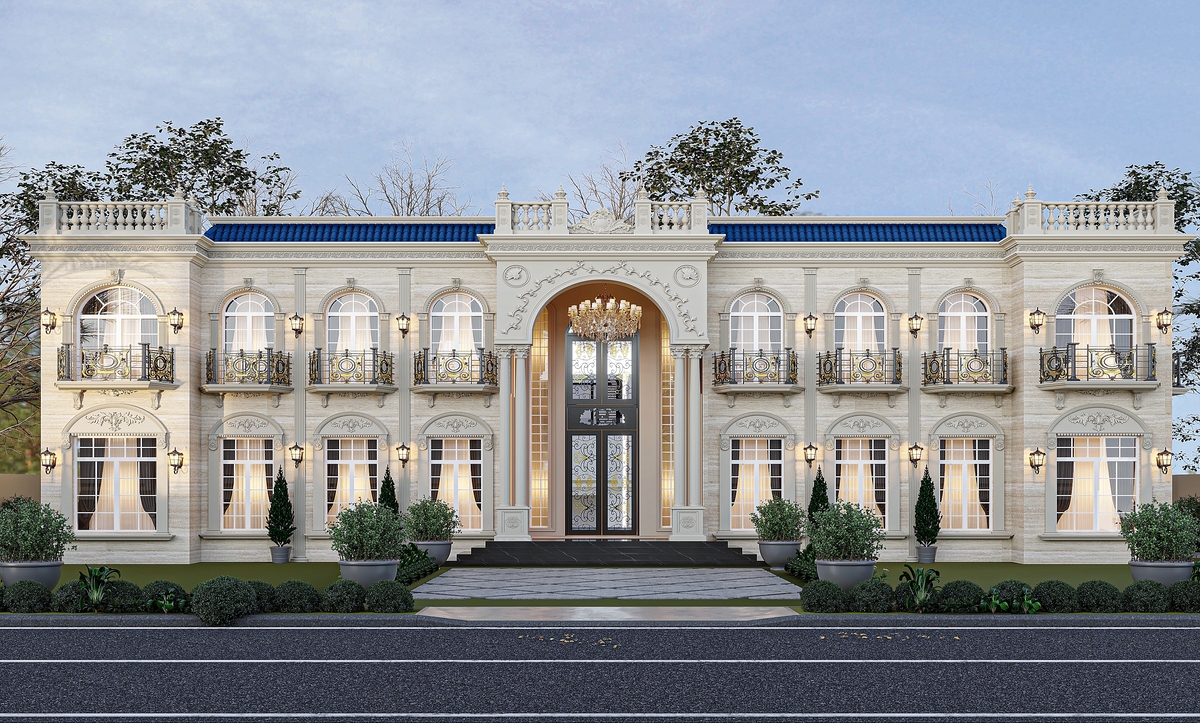
The staircase often served as the centerpiece. No longer hidden, it became a statement of status and spectacle. Ascending it symbolised approaching the seat of authority.
Dolmabahçe Palace, Istanbul
An extraordinary example of East meeting West, Dolmabahçe Palace on the Bosphorus (completed in 1856) blends Ottoman elegance with Baroque and Neoclassical design. Its wrought-iron gates, covered with intricate patterns, open to reveal a façade of arches and columns inspired by European classicism.
Inside, the Crystal Staircase — with balustrades of Baccarat crystal and a chandelier weighing four tons — turns the act of entering into an unforgettable experience. The palace’s multiple entrances, including the Imperial Gate and Gate of the Treasury, defined social rank and ceremony, separating dignitaries from the public and reinforcing order within the royal domain.
Buckingham Palace, London
In Britain, Buckingham Palace expresses hierarchy through architectural planning. Its U-shaped design frames a forecourt that manages ceremonial approach. The gates themselves — iron and gilded — act as layers of privacy and symbolism.
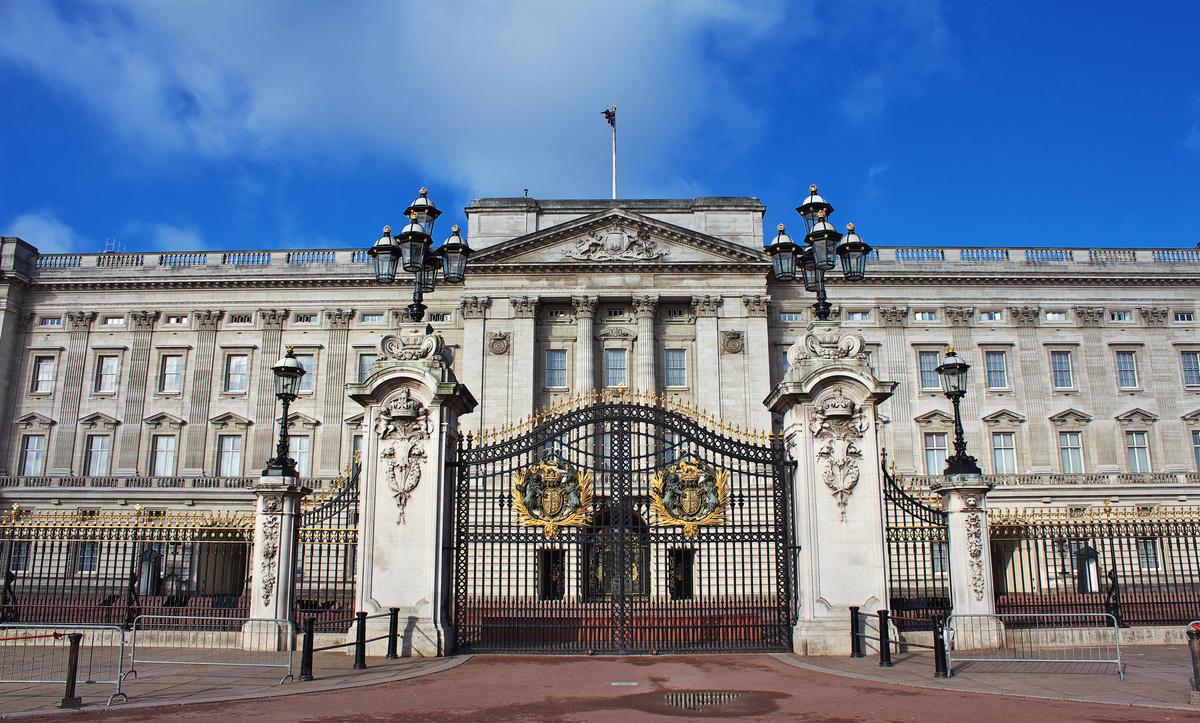
Visitors enter through different routes depending on their status: one gate for diplomats, another for public tours, and another for formal events. Inside, John Nash’s Grand Staircase provides a dramatic ascent to the State Rooms, lined with portraits of royal lineage. The design mirrors a passage through time — an architecture of dignity and continuity.
Versailles: The Restored Gate of Honour
At Versailles, the golden gates dismantled during the Revolution have been fully restored to their former splendour. Known as the Gate of Honour, the gilded portal stands as both architectural and historical emblem.
Each sculpted figure, from Victory over the Empire to Victory over Spain, communicates triumph and power. The gate continues to welcome millions of visitors each year, demonstrating how grandeur can endure and adapt across centuries.
Royal Palace of Caserta, Italy
Luigi Vanvitelli’s Royal Palace of Caserta in southern Italy sought to rival Versailles in both size and grace. Visitors enter through a central gate that opens into an atrium leading to the Grand Staircase, a masterpiece of marble design with 116 steps.
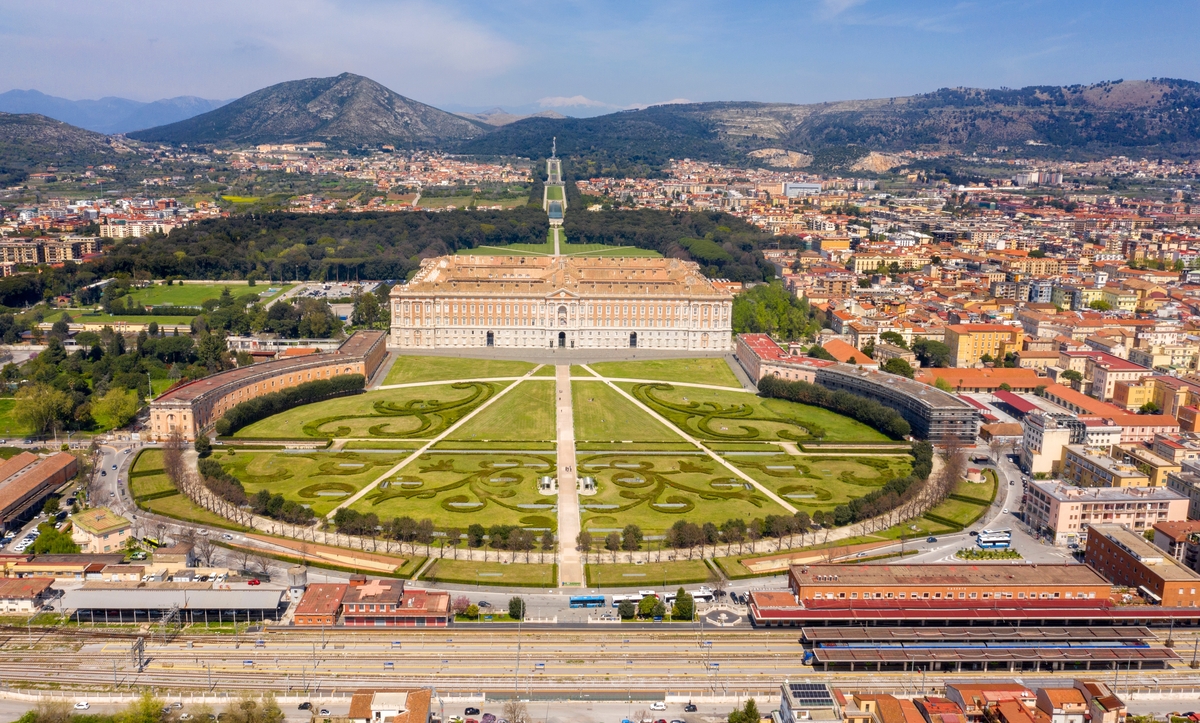
Two lions guard its base, while statues of Majesty, Merit, and Truth oversee the landing. Musicians once played from a hidden gallery above, turning arrival into ceremony. The entrance served as both physical gateway and symbolic passage into the world of the king.
Eastern Palaces: Gates and Hierarchy
While European palaces emphasised spectacle, many Eastern palaces expressed authority through progression. Each gate represented deeper access to privilege and reverence.
The Forbidden City, Beijing
The Gate of Supreme Harmony in Beijing’s Forbidden City is among the most imposing in the world. Spanning sixty metres and crowned with golden tiles, it is guarded by bronze lions and mythical beasts.
Each detail conveys imperial power: five arches assigned to specific ranks, terraces that raise the emperor above others, and decorative symbols representing cosmic order. To pass through these gates was to step into a world ruled by strict hierarchy and ritual precision.
Topkapi Palace, Istanbul
The Ottoman Topkapi Palace tells its story through a series of gates, each signifying deeper privilege.
- The Imperial Gate (Bab-ı Hümayun) admitted the Sultan and honored guests on horseback.
- The Gate of Salutation (Babüsselam) led to the Second Courtyard, where visitors dismounted in respect.
- The Gate of Felicity (Babüssaade) marked entry into the Sultan’s private chambers.
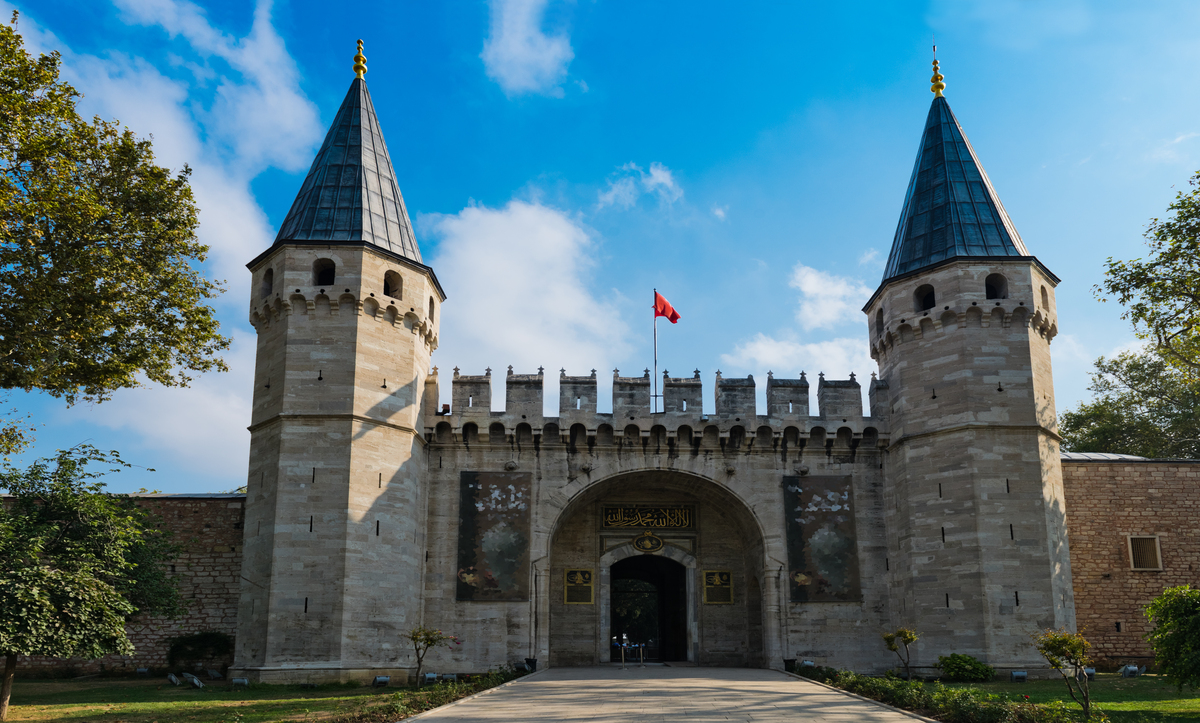
This spatial sequence turned architecture into ceremony, moving from the public toward the sacred with measured grace.
Royal Palace of Madrid
Spain’s Royal Palace of Madrid demonstrates how multiple entrances serve both function and decorum. The Prince’s Gate, facing Plaza de la Armería, is reserved for official ceremonies, while other gates manage visitors and staff.
Inside, Francesco Sabatini’s marble staircase impresses with seventy steps, bronze railings, and a frescoed ceiling by Corrado Giaquinto. Sculpted lions guard the base, combining strength with elegance. The combination of marble, bronze, and painting transforms the act of entering into an experience of refinement.
City Palace of Jaipur and Mysore Palace, India
Indian palaces show deep understanding of spatial procession. The City Palace of Jaipur features three main gates (Tripolia, Udai Pol, and Virendra Pol), each directing visitors toward specific courtyards and halls. Movement through these spaces followed a planned rhythm from public to private zones.
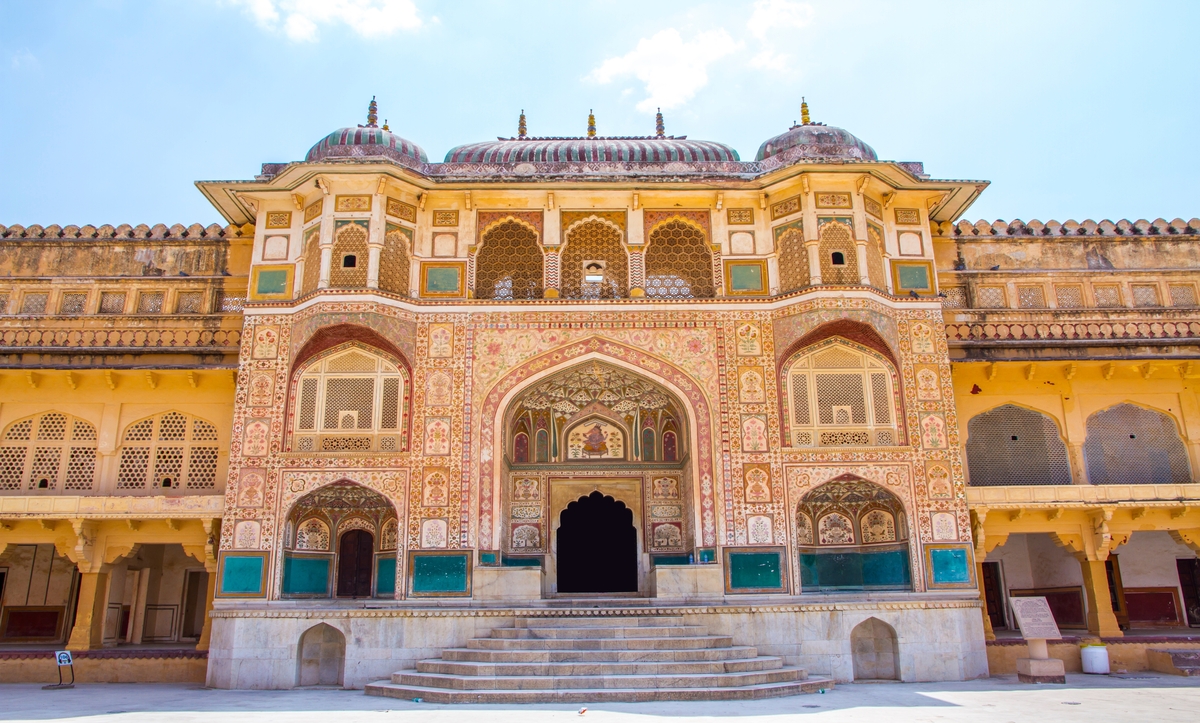
The Mysore Palace, built in the Indo-Saracenic style, features a central Elephant Gate flanked by pillars and arches. Inside, brass lions, woodwork, and stained glass express local design at its finest. The layered sequence of gates and verandas reflects order and ceremony within royal life.
The Alhambra, Granada
The Alhambra in Granada stands as one of the most admired achievements of Moorish architecture. The Gate of Justice — a tall horseshoe arch with a carved hand symbolising the five principles of Islam — guards the southern approach to the palace.
Other gates, such as the Wine Gate and Gate of the Pomegranates, performed both defensive and ceremonial roles. The combination of geometry, calligraphy, and proportion gives the Alhambra a sense of calm and authority that still captivates visitors today.
5- Designing the Grand Entrance
Across history, successful entrances have combined structure, purpose, and experience. Modern designers reinterpret these ideas using proportion, material, and light.
a. Define the Concept
Each entrance should express the intended atmosphere — whether royal, contemporary, or relaxed. The overall design language should remain consistent with the building’s purpose.
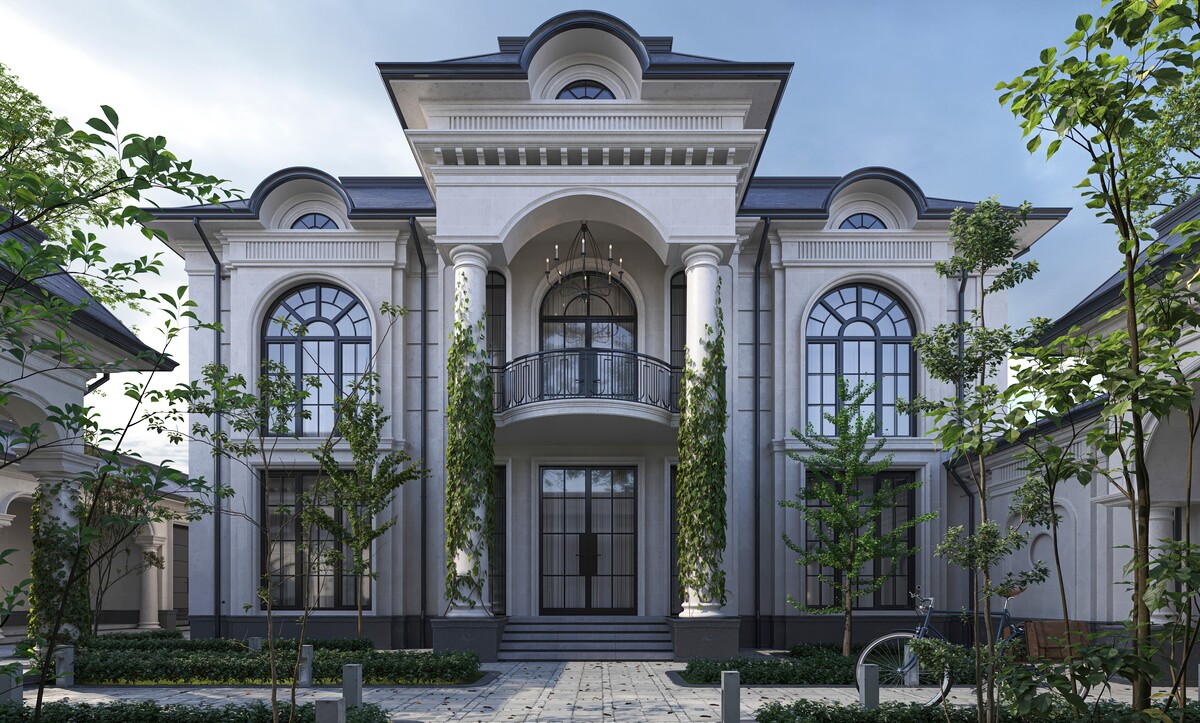
b. Align the Axis
Positioning the entrance along a visual line draws the eye toward a key element, such as a courtyard, water feature, or landscape view. This alignment introduces a natural sense of direction.
c. Frame the Facade
Columns, arches, or vertical fins create depth and visual hierarchy. In palatial design, layered gates and porticos add structure and rhythm.
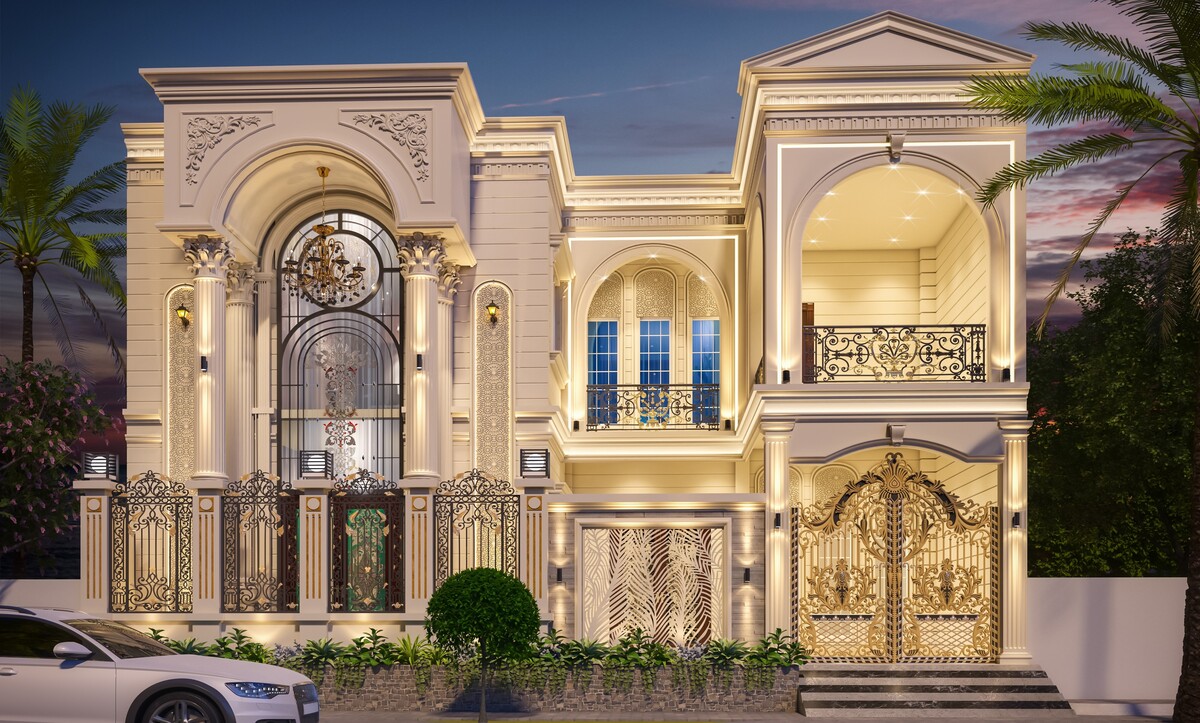
d. Lighting as Design
Lighting influences both emotion and visibility:
- Warm wall lights create comfort.
- Ground lighting accentuates textures and columns.
- Subtle backlighting adds modern character.
e. Integrate Landscaping
A grand approach starts from the driveway or garden. Palm trees, fountains, and hedges guide visitors, extending the impression of arrival.
f. Design the Doorway
- Palatial approach: detailed carvings, decorative metal, and rich finishes.
- Modern approach: wide pivot doors or glass panels connecting indoor and outdoor spaces.
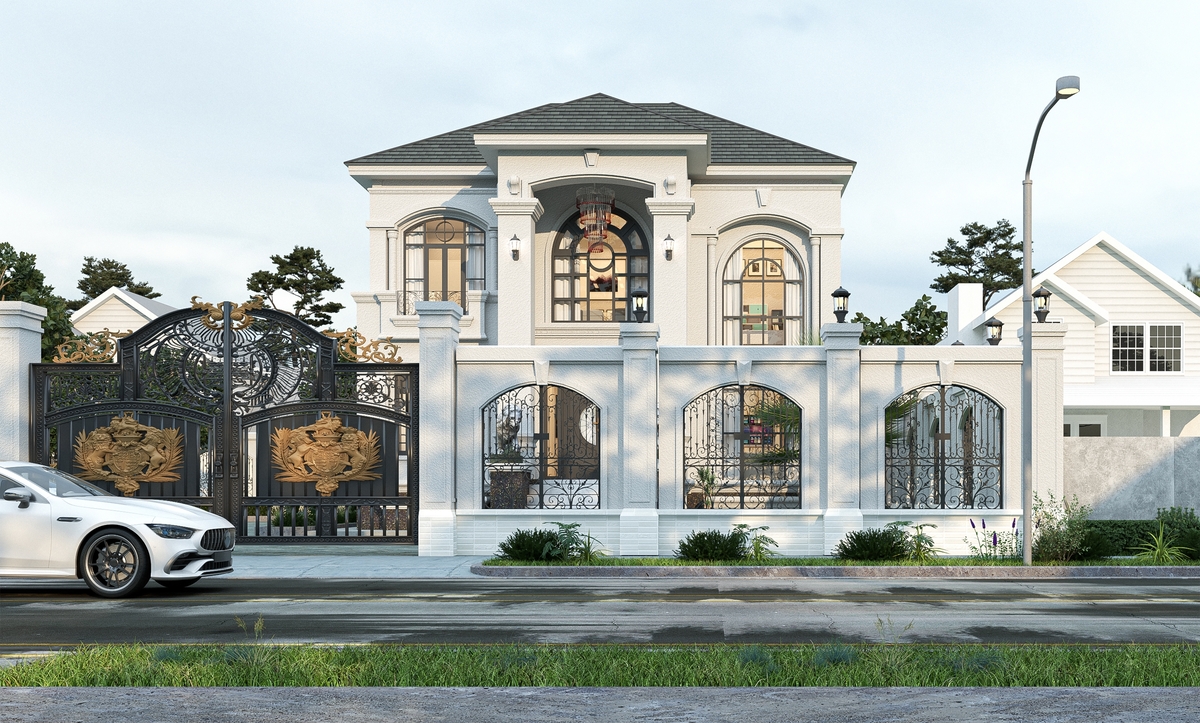
g. Add Complementary Details
Sculptures, staircases, or water features enhance presence. Proportion and restraint maintain harmony and prevent visual overload.
6- Iconic References
- Versailles’ Golden Gate: a model of Baroque elegance restored with over 100,000 gilded leaves.
- Topkapi Palace’s Imperial Gate: a structure that embodies Ottoman geometry and symbolism.
- Villa Rotonda: Palladio’s vision of balance, with identical porticos on four sides.
- The Alhambra’s Gate of Justice: Moorish design that combines function with symbolic meaning.
- Dolmabahçe Palace: Ottoman and European elegance united through its Crystal Staircase.
7- Principles of Distinguished Entrances
From ancient villas to modern estates, certain principles remain consistent:
- Hierarchy and Sequence – Multiple gates or courtyards build anticipation and define progression.
- Symbolism – Sculptures, emblems, and inscriptions express values such as strength, unity, or faith.
- Integration of Art – Architecture often works together with sculpture, painting, and decorative design.
- Symmetry and Scale – Balanced proportions create calm and refinement.
- Material Quality – Use of marble, bronze, fine wood, and stone conveys permanence and elegance.
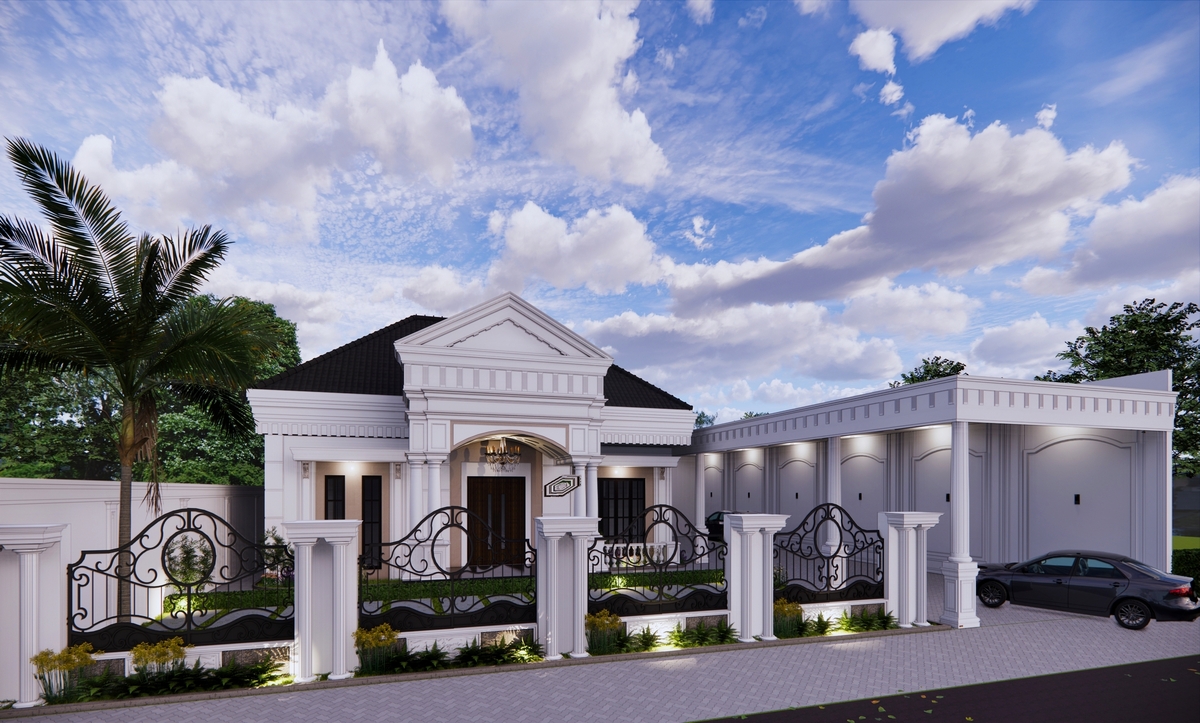
These principles show that an entrance’s success depends not only on size, but on composition and meaning.
8- Modern Influence and Technology
Today, design innovation continues to evolve through technology. Smart gates, motion-based lighting, and automated systems add comfort and security while keeping visual integrity.
Modern entrances seek emotional response — spaces that feel welcoming, impressive, and memorable. In this way, new design meets timeless aspiration.
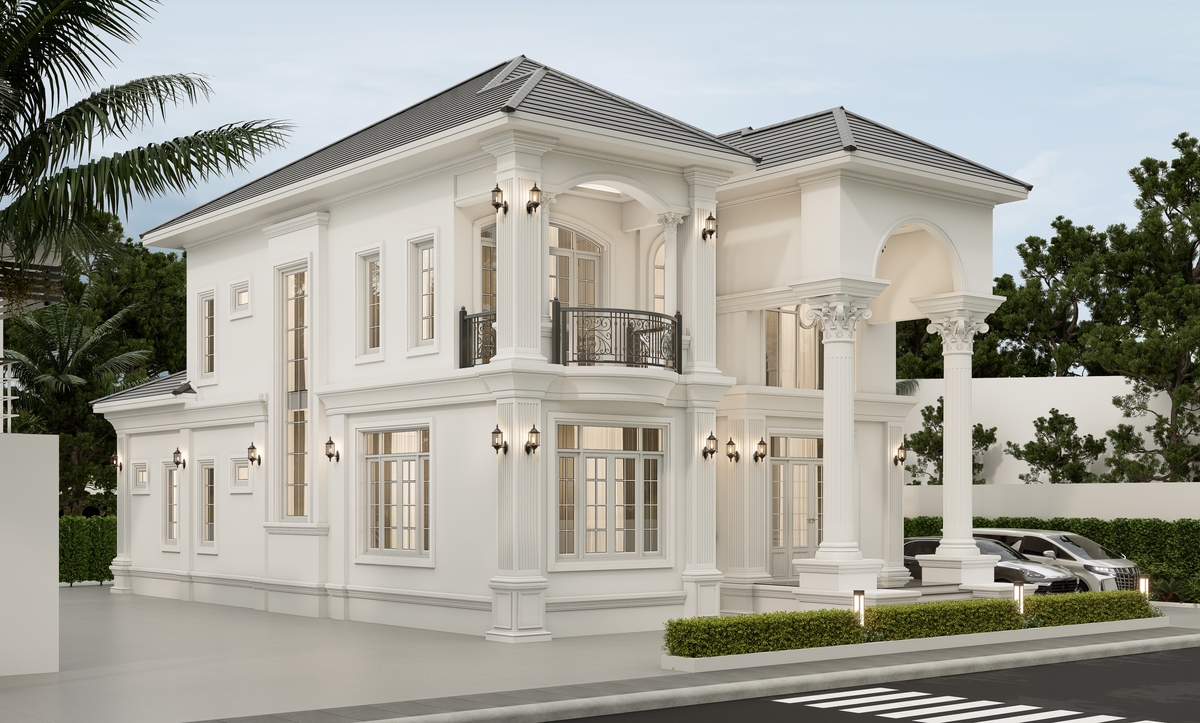
Conclusion
Entrances to villas and palaces remain powerful expressions of identity and aspiration. They represent the meeting point between exterior and interior, between the world outside and the spaces within.
From Roman colonnades linking homes to gardens, to Palladian porticos in Renaissance Italy, to the dramatic staircases of Baroque palaces and the precision gates of the East, each example reveals how design communicates presence and intention.
Modern residences designed by Algedra Interior Design continue this lineage through refined materials, balanced proportion, and thoughtful lighting. Whether built of stone, wood, iron, or glass, an entrance continues to welcome, guide, and inspire — the essential first encounter of every great building.
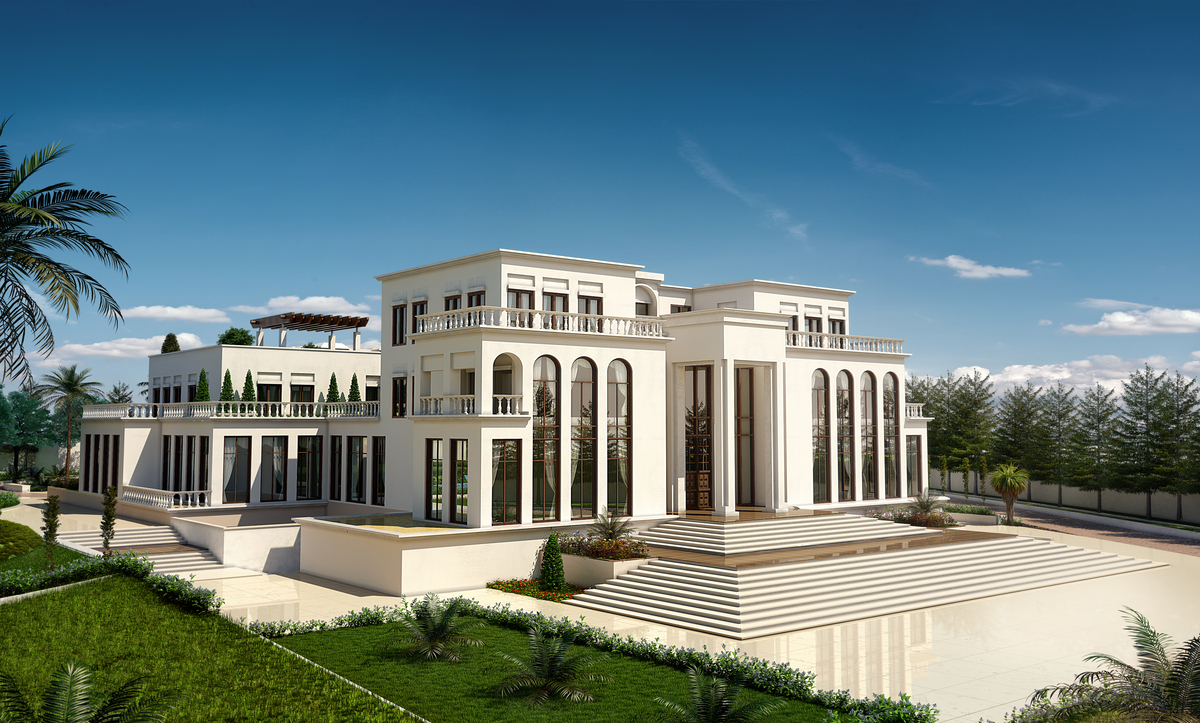
Frequently Asked Questions
1. What materials are best for villa entrances?
Natural stone, marble, and high-quality wood create timeless appeal, while metal alloys and modern composites offer strength and contemporary character.
2. How can lighting improve the entrance experience?
Lighting enhances depth and draws attention to design details. Combining ambient, accent, and landscape lighting creates both clarity and atmosphere.
3. What is the ideal door size for a luxury villa entrance?
Grand entrances often feature doors between three and four meters high, but proportions should correspond with the building’s height and width.
4. How do cultural influences affect entrance design?
Cultural background shapes motifs, geometry, and symbolism. Arabic designs use calligraphy and pattern, while European palaces highlight symmetry and columns.
5. Can modern technology enhance palace-style entrances?
Yes. Automated gates, biometric access, and smart lighting merge practicality with elegance, improving comfort while maintaining aesthetic standards.
Contact Algedra Interior Design
Designing an entrance that leaves a lasting impression requires precision, proportion, and imagination. At Algedra Interior Design, our architects combine classical knowledge with modern design to create entrances that express elegance and confidence.
Ready to upgrade your entrance with distinction?
Contact our team today to begin developing an entry concept that reflects your personal vision and lifestyle.